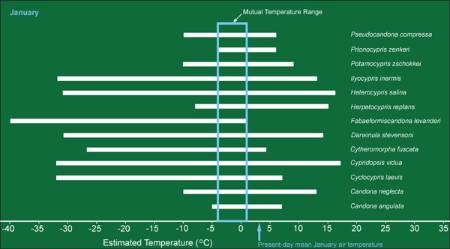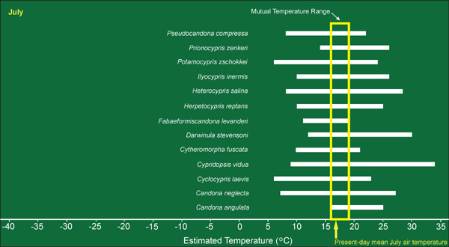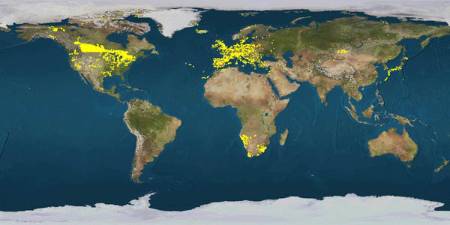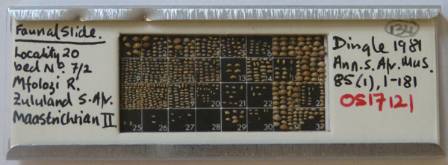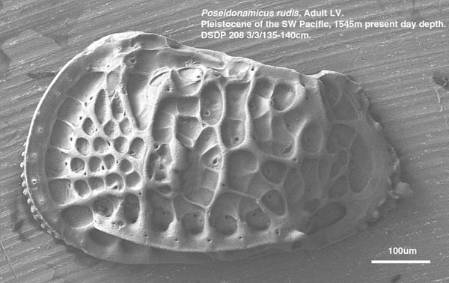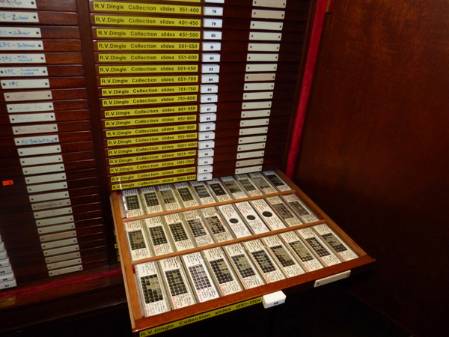Postdoctoral research visitor Ceran Sekeryapan from Turkey has been studying lacustrine ostracods from our collections over the past week with the intention of adding records to the database of Non-Marine Ostracod Distribution in Europe (NODE). This database, combined with details of modern climate records and Geographical Information System (GIS) software is increasingly being used to reconstruct past air temperatures.
Cypris pubera, a freshwater ostracod (courtesy of Dr David Horne).
- Ostracods and temperature
It has long been known that some non-marine ostracod species prefer colder while others prefer warmer climates. The Mutual Ostracod Temperature Range (MOTR) method, developed by Dr David Horne at Queen Mary University of London, calibrates each species by calculating the range of air temperatures that they can tolerate. This is done by plotting the present geographical distribution of each species and using detailed modern records of climate in these locations to calculate a seasonal air temperature range.
Other factors affect the distribution of ostracods, for example the chemisty, depth and hydrology of different water bodies harbouring ostracods.
- Reconstructing past climates
Many species present in the modern day are also present in the Quaternary fossil record covering the last 2.5 million years. The MOTR method plots air temperature ranges of each species present in a fossil assemblage so that a mutual temperature range can be derived.
Temperature ranges of non marine ostracod species identified by Horton et al. (1992) from a Hoxnian site about 400,000 years old at Woodston, Peterborough. The mutual temperature range for the month of January is calculated and shows slightly lower mean temperatures than the present day (courtesy of Dr David Horne).
The same species are plotted for July and show temperatures similar or slightly warmer than the present, a seasonal conclusion in general agreement with studies on plant macrofossils, pollen and molluscs (courtesy of Dr David Horne).
- Developing our collections
Ceran has been identifying species part of a large microfossil collection donated in 1991 by Prof. John Neale of the University of Hull. As well as providing new identifications and ratifying previous interpretations, she will provide new latitude and longitude references for the sites that our material has come from using a method called georeferencing. Modern maps and available resources like Google Earth are used to provide up to date latitude and longitude readings that were not present in the original data.
Coverage of Recent non marine ostracod records in the OMEGA database (courtesy of Dr David Horne).
- The global picture
Key data from the NODE database and other large datasets from Canada, USA, southern Africa and Japan are being assembled in OMEGA (Ostracod Metadatabase of Environmental and Geographical Attributes). This will facilitate improved calibrations as well as biogeographical and biodiversity research. Details from large museum collections like ours are continually being used in this work.
- The future
Testing and refinement of the MOTR method can only make this climate interpretation tool more accurate in the future. Ceran will be applying this method and gathering more data from sites in Turkey. Contributions to the OMEGA database are also invited as part of a citizen science project. Museum collections are also set to play a vital role in this study.



